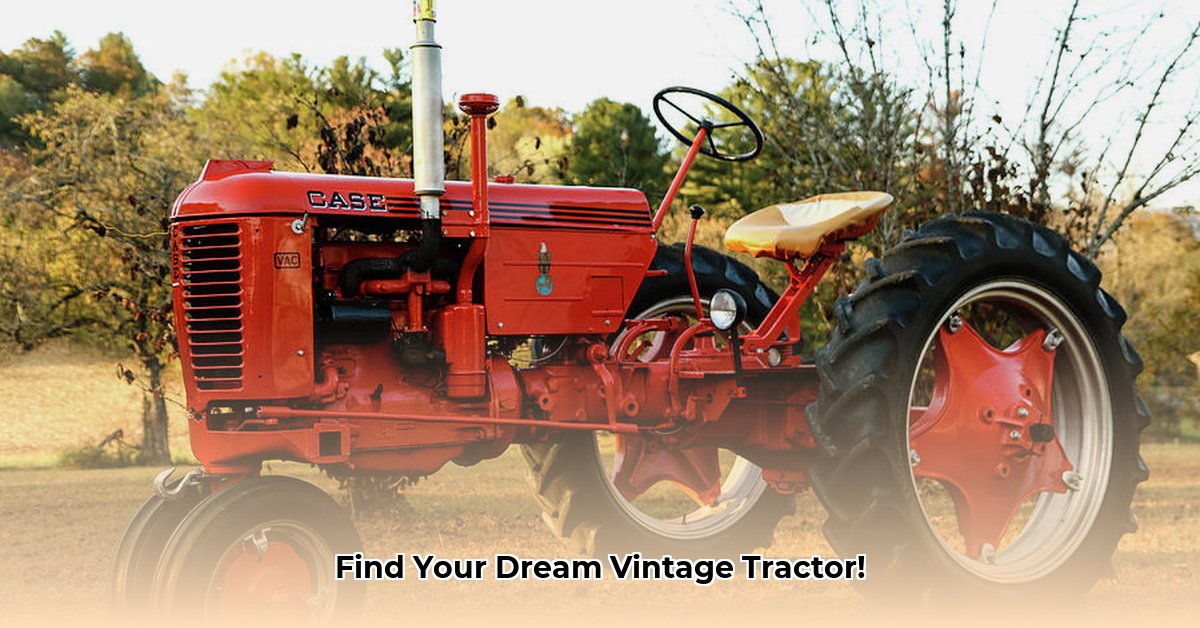
Old Case Tractors: Navigating the 2025 Market
The market for used Case tractors is a dynamic landscape of opportunity and challenge. While demand remains strong, especially for tractors in the 40-99 horsepower range, inconsistent condition reporting can make finding the perfect machine a real puzzle. This guide equips both buyers and sellers with the knowledge to navigate this market successfully. For other rare tractor makes, check out this resource.
Market Overview: Understanding the Landscape
The used Case tractor market shows strong regional variations. Areas with high agricultural demand often command higher prices due to increased competition and transportation costs. While precise pricing fluctuates, a clear trend emerges: tractors in the 40-99 horsepower range are highly sought after. However, high-horsepower models maintain value due to their enduring capabilities. Auction type also plays a role, with online platforms driving competition, and local auctions enabling hands-on assessment. Isn't it interesting how location and choice of auction can change the whole game?
(Illustrative chart/graph showing price ranges by horsepower and region would be included here.)
Buying Guide: Your Step-by-Step Plan
1. Finding Listings: Start online using specialized farm equipment sites. Sites such as Yesterday's Tractors (https://www.yesterdaystractors.com/values/CASE.html) offer detailed listings. Don't rule out local auctions; they often yield hidden gems.
2. Assessing Condition: A comprehensive pre-purchase inspection is non-negotiable. Thoroughly examine:
- Engine: Check for leaks, unusual noises, and compression levels.
- Transmission: Test gear shifting for smoothness. Grinding indicates potential problems.
- Hydraulics: Verify functionality and check for leaks in lift arms and other components.
Vague descriptions are a red flag. Ask detailed questions about maintenance history, operating hours, and any past repairs. Remember, a thorough inspection can save you thousands in unexpected repair costs.
3. Negotiating Price: Research comparable models using online resources to determine a fair market value. This knowledge anchors your negotiation strategy. Remember the typical price range for similar tractors in your region and leverage this information. Be prepared to walk away if the price is unreasonable. A fair deal benefits both buyer and seller.
4. Financing & Transportation: Explore farm equipment financing options. Factor in transportation costs, accounting for distance, chosen method, and potential fuel surcharges.
Selling Guide: Maximizing Your Return
1. Preparing Your Tractor: Thorough cleaning is essential. Repair any obvious issues and gather all available maintenance records. First impressions matter, and a well-maintained tractor commands a higher price.
2. Writing Effective Listings: Use high-quality photos showcasing all aspects of the tractor. Be detailed and accurate in your description; honesty builds trust. Consider using a standardized condition grading system if possible.
3. Choosing an Auction Platform: Weigh the pros and cons of online versus on-site auctions. Consider your comfort level with technology and the reach you desire.
Conclusion: Due Diligence is Key
The used Case tractor market presents immense potential for savvy buyers and sellers. By following this guide and undertaking thorough due diligence, you significantly increase your chances of a successful transaction. Remember – research, inspection, and informed negotiation are your greatest allies in this exciting market.